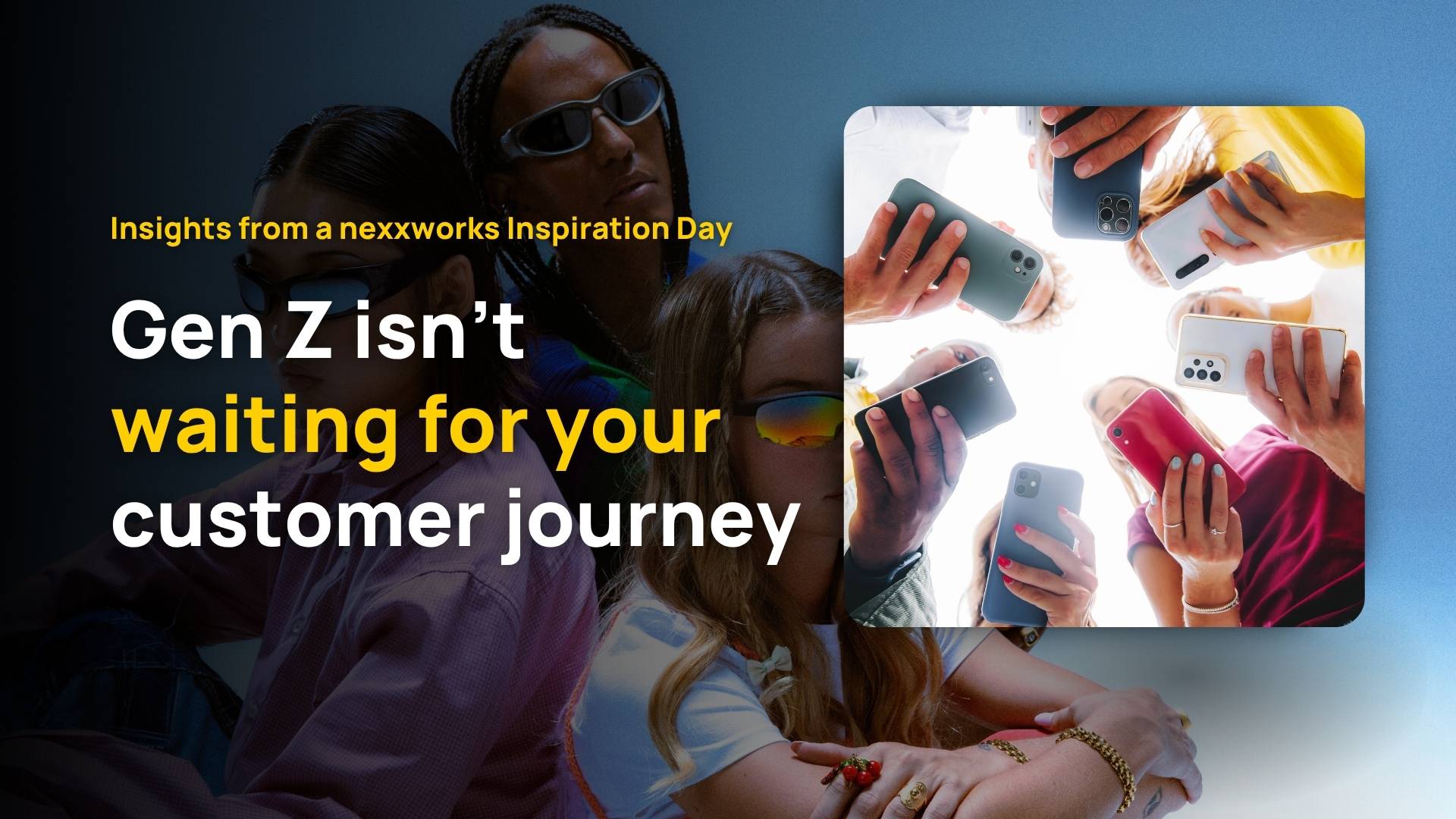Want to create purpose and engagement? Use these 5 storytelling ingredients
‘My world has opened up so much’
.png)
‘My world has opened up so much’: after my 6 years at nexxworks, that is the reaction I probably hear most often from new hires and it’s the feedback I’m truly most proud of. It goes right to the core of what we do for our customers as well.
To be completely honest, it has been a challenge, though, to open up this world in the past years. A pandemic has slammed many global doors. It has made continents much less and sometimes even not accessible. It has paralyzed ambitions. It has brought out opinions and polarities that were hidden in the trenches of ‘the normal world’. It has made a lot of worlds very small. It’s cloudy, moody and windy these days.
And still in the worst of times, it’s truly the best of times. Nexxworks has been inspiring and connecting since 2014 , focusing on how leaders and companies should sense what’s next in the world. On how need to think about their Day After Tomorrow, their license to operate, their purpose. We had already seen a shift pre-pandemic when the conversation evolved from purely strategic to organizational. How do we get our organizations to adapt? Not once, but enduringly. How do we catalyze entire teams all over the world to make a dent in the universe? To win together, to change together, even in the most unclear context they might have ever been working in.
At nexxworks, we’ve always believed that companies and individuals should invest 10% of their time and resources into contemplating, exploring and building the ‘Day After Tomorrow’ future.
Ironically, it took a pandemic to get the business world a bit closer to the general adoption of that belief. It has evolved into something that is not something to put on the agenda once every 5 years, or every quarter, but as a part of how you operate as a company, of your DNA.
10 years ago management books were championing the success stories of those companies with the largest -whatever it takes- financial profits. And today I wonder and hope that the books of the future will champion companies with an identity larger than that. I’m joyful to see that companies are looking for new perspectives. That they are making their worlds bigger. But most of all, that they are inviting their teams into exploring a larger world and imagining a different future.
To end up in the big book (as an NFT or other…) of company stories, I believe an organization should focus on 5 aspects to go beyond purely financial pull power:
- Know your true story
- Tell your story
- Live your story
- Share your story
- Lead your story
True, this may seem a bit simplified but when you think about it, all leadership books mention the power of people: the enormous importance of teams and culture to actually achieve results. Whatever cultural choices are made (we agree that Elon Musk’s style is quite different than let’s say Disney’s Bob Iger’s was): having a culture- and story choice and strategy matters a lot. That’s why I love how Yuval Noah Harari describes our species as “storytelling animals”:
“Humans think in stories, and we try to make sense of the world by telling stories”.
What follows are the storytelling insights I had, following company visits in our global programs and conversations with business leaders from all over the world, combined with my own personal experiences as CEO.
Know your company’s true story
The standalone narrative of financial success is regarded as incomplete. In fact, it is becoming a point of critique if a company only focusses on revenue. Being a purposeful company is no longer a USP, it’s becoming a requirement to operate. This purpose, this Bigger story is obviously an add-on. We all know that there is not a magical world where business thrives without a financially working model either. Changing the world without being financially stable won’t get you anywhere beyond clouds and fairytales. But that being said, more than ever the war for talent indicates that companies with a purpose get the best talent. Eventually people – be they customers, partners, users, leaders or employees - and how they go for a story, make the difference between success, financially or when succeeding in a purpose.
Tell your story
Having a purpose is one thing. Making sure your employees are its ambassadors is another. Before they can engage in your story, they simply first must know about it. What are your storytelling mechanisms? How do you embed the story consistently into your operations? How is everybody following the same story? Actually, if you repeat a message 7 times in 7 different ways, you’ll succeed in making it stick. It was a strategy originally applied by the movie industry in the thirties and has only gained in prominence in the era of social media. Thé sticky message of the year for me is the more ways and times you will get your message across, the better your audience will stick to it. For me, a natural ‘new-seeker’ it’s one of the most challenging aspects of managing a company: stick to the message and don’t add new elements to it.
Live your story
Want to go next level in storytelling? Don’t just repeat it. Make sure you include a memorable moment. One of Steven Van Belleghem’s latest favorite books is ’The Power of Moments’ by Chip Heath and Dan Heath which beautifully illustrates and backs the point of the experience economy that emerged the last decade. You can give PowerPoints, you can send internal memo’s OR you can invite your employees to ‘live your story’. That’s for example why we decided at nexxworks to do a yearly inspiration trip ourselves. It’s our bread and butter, it’s what moves people to new lengths, so we want to make sure everybody at our company actually knows the story of why heat experiences like these inspiration tours matter. We’ve seen huge innovation budgets approved after one week of immersion. We’ve seen cultural shifts adopted and we’ve seen talent grow faster, because leaders invited and allowed their people to live, explore and smell the story of the company.
Share your story
If you managed to let your crew tell thé authentic story about your company, then you’ve come a long way. Congrats! Now how about achieving the same with your external stakeholders? Your suppliers? Needless to point to: your customers? How do they know your true story, your unique identity? Why do they really love you? Again, consider it an AND-story: you need an “offer you can’t refuse” as Steven Van Belleghem would say and actions tell more than a thousand words. Yet it remains important that those actions are in line with your story. That they tell the same things, that they live the same value. If you share something valuable with someone, it forms a relationship. People get to trust you and your story, so how are you nurturing those relationships? It’s merely the question of managing how you share your story, isn’t it?
Lead your story
Managing storytelling is a crucial part of leadership today. I still love that ‘aha moment’ of a country director during one of our immersion trips: ‘leadership basically is about entertainment, we need to be storytellers but in a balanced way: knowing when to be fun and when to be serious! The TGIF moments at Google were instrumental in that. Airbnb, then, has ‘ground control teams’ who travelled the world to make sure their offices and teams lived the true story of Airbnb: ‘Belong Anywhere’. New companies just have a new story which might be refreshing, that does not mean they’re necessarily better in telling it. Any company can nurture identity, fuel company rituals and make sure that a bunch of people always see the silver linings that its company brings to the(ir) world.
Last few months I attended a bunch of meetings with leaders all over the world where the word “storytelling” kept coming up. What is? I want to be better in it. What is it not? How do I get a consistent message out there? How do I convince my peers we need to devote more attention to it? And so on. I got a good feeling about this debate, as it does show that there is attention going to 1) which message and story do we want to tell and 2) how do we include everybody in that journey?
And with that silver lining, I look forward to the rest of summer, and the seasons to come. They sure will remain moody and windy from time to time, yet don’t four seasons form a great canvas for a better future?
I look forward to discovering your stories! I’d love you to share them with me over coffee, virtual or real!



.png)



